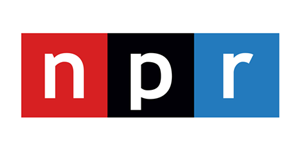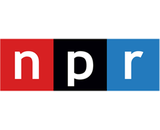
The fourth annual report explores the ways spoken word media consumption in the U.S. has increased over time, including the number of listeners, and how long they listen.
The findings were presented in a webinar hosted by National Public Media (NPM) VP of Sponsorship Marketing Lamar Johnson and Edison Research VP Megan Lazovick and are available now at npr.org/spokenwordaudio.
This year’s study also includes a special focus on how younger demographics are increasingly more interested in the medium, and reveals a 214% increase in listening to spoken word audio among those age 13-24.
Key findings from the study include:
- The number of spoken word audio listeners continues to increase. There are an estimated 26 million more people listening to spoken word audio in the U.S. than eight years ago. An estimated 131 million people in the U.S. age 13+ are daily spoken word audio listeners, up from 105 million daily listeners in 2014.
- Spoken word’s share of all audio is increasing among all listeners. Listeners age 13+ spend 29% of their total audio time with spoken word content, up from 20% in 2014, a 45% increase.
- Listeners age 13-24 show the most explosive growth with share of spoken word audio. That Gen Z segment spends 22% of their time with spoken word audio, compared with those age 13-24 in 2014 who spent only 7% of their time with spoken word audio, a 214% increase for this age group.
- For the first time ever, daily spoken word audio listeners spend a majority of their audio time with spoken word. Those who listen to spoken word audio daily spend 51% of their total daily audio time with spoken word.
Additional key findings:
- Spoken word audio listening has continued the shift to mobile devices: 34% of all spoken word audio is consumed on a mobile device, up from 9% in 2014. Younger listeners are more likely to listen on a mobile device: Among those age 13-24, 62% of their spoken word audio is consumed on a mobile phone.
- 47% of time spent with spoken word audio is spent with AM/FM radio, 21% with podcasts, 11% with audiobooks, and 21% with other.
- 58% of time spent listening to news audio content is with NPR/Public Radio.
RAIN Analysis: A decade ago, after Howard Stern had left AM/FM radio (which happened in 2006) for a presumably smaller audience on SiriusXM, “spoken word audio listening” primarily consisted of Rush Limbaugh-ish talk on AM radio, NPR news on FM radio, news radio & play-by-play sports & sports talk on AM radio, an unknown amount of listening to SiriusXM’s talk channels, and some audiobook listening — and much or most of that listening was among older demos (age 55+ or even 65+).
Today, with the decline of AM talk radio and thanks largely to podcasts (both from broadcasters like NPR and others and from independent podcasters), the content is more diverse and the audience is significantly more youthful.
Download the full presentation from the National Public Media website here.

